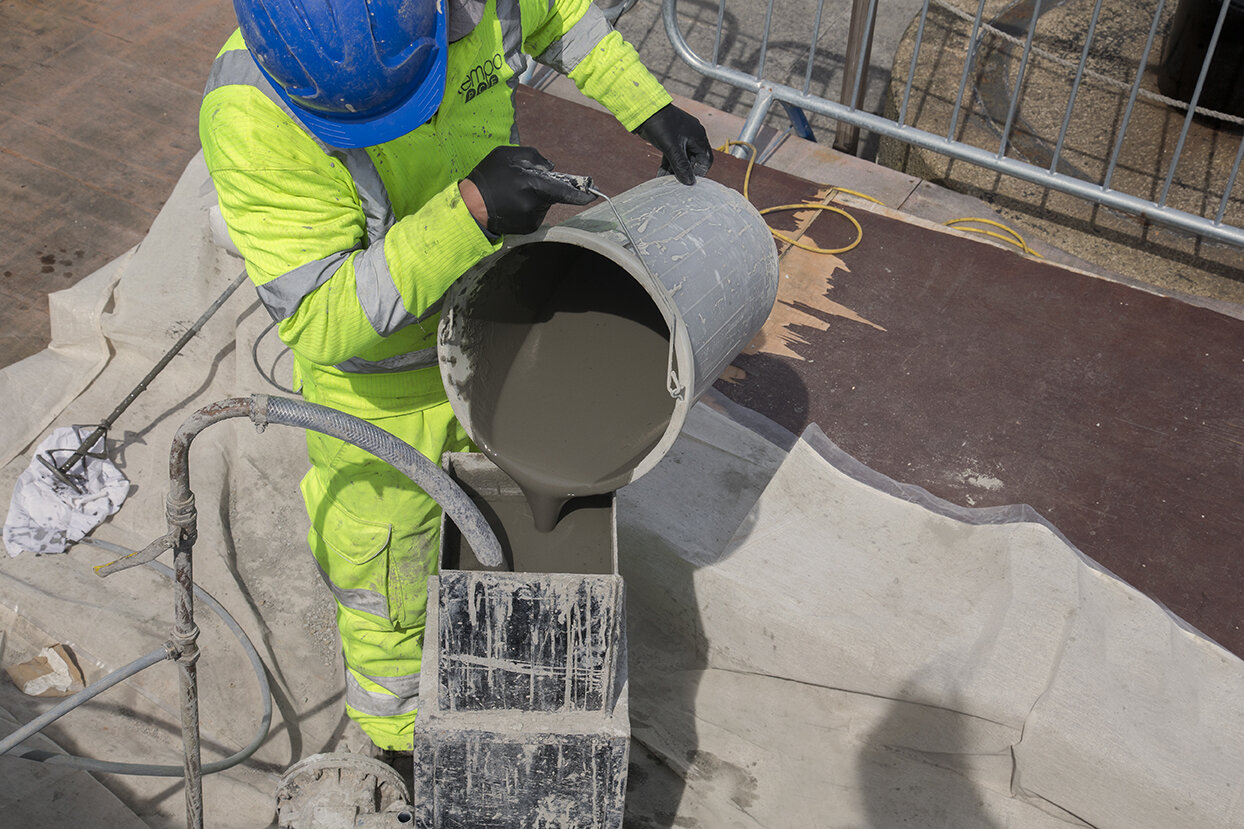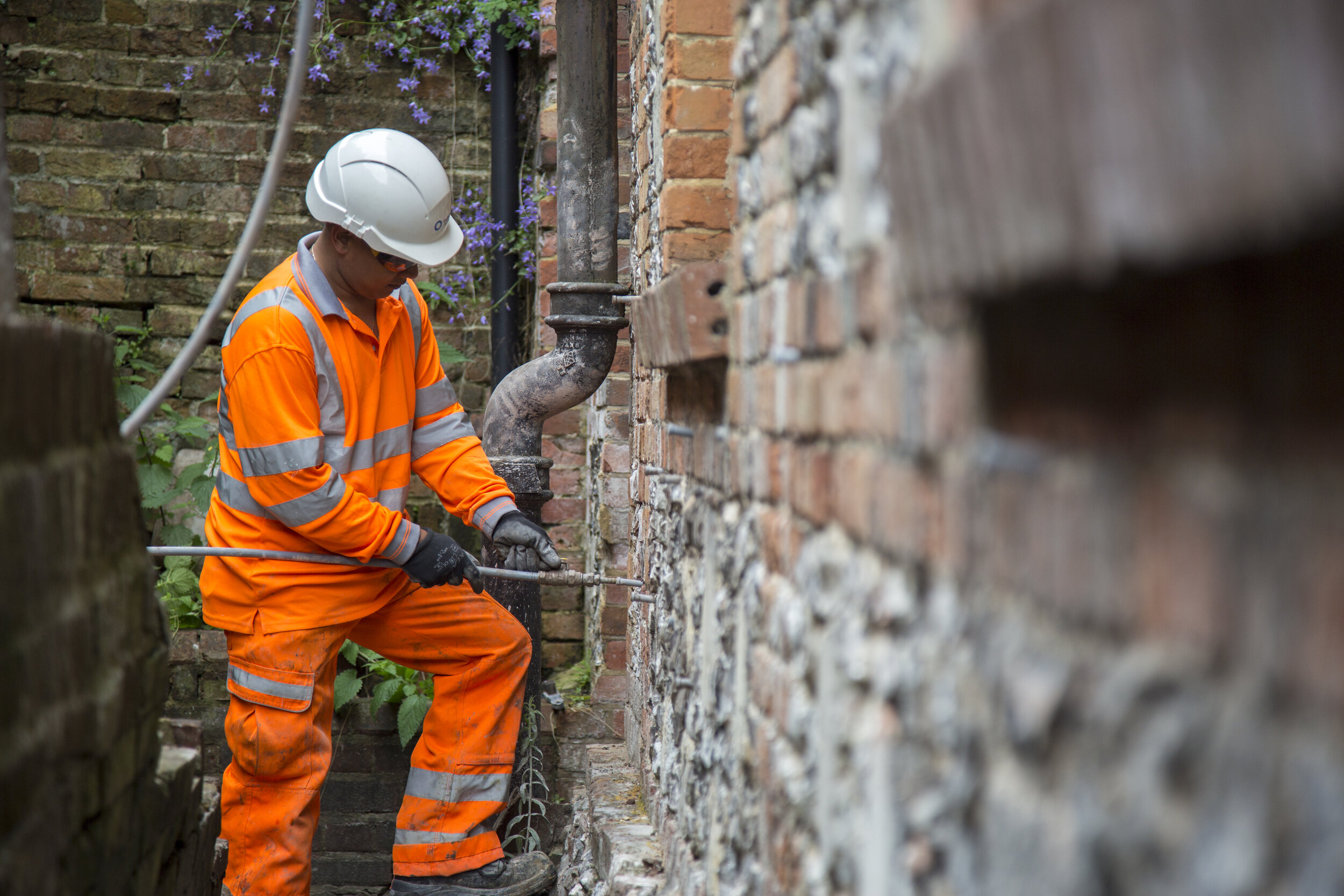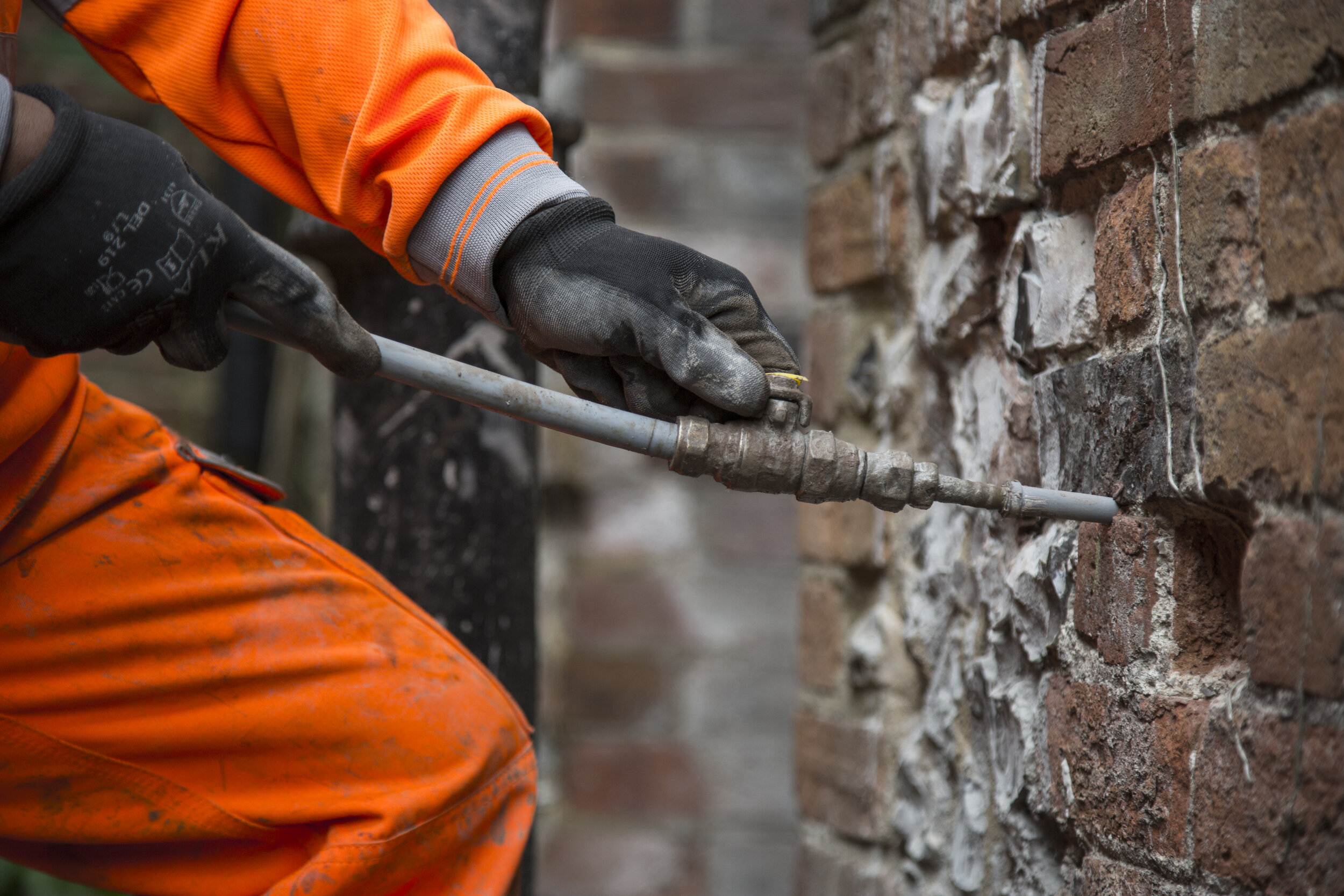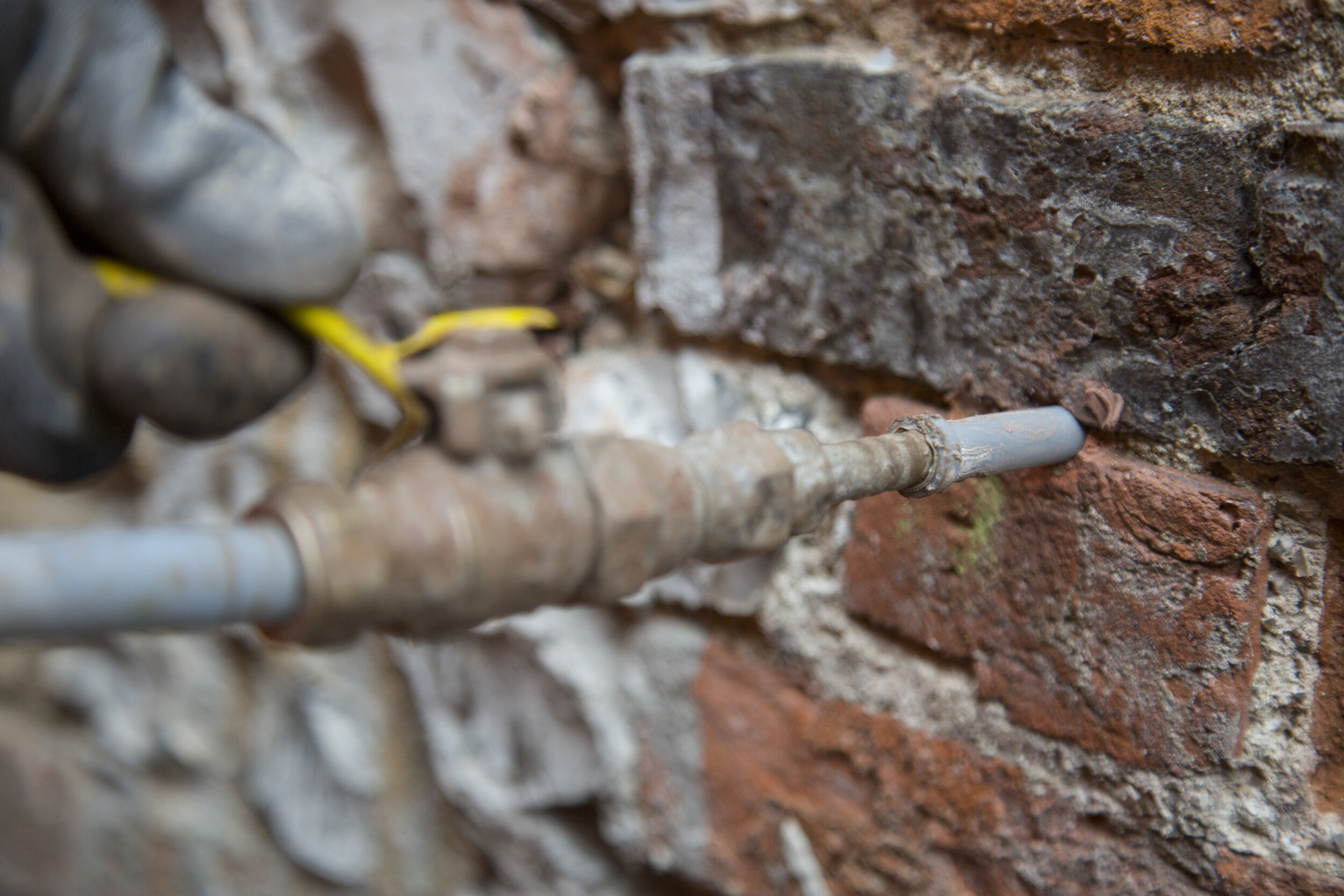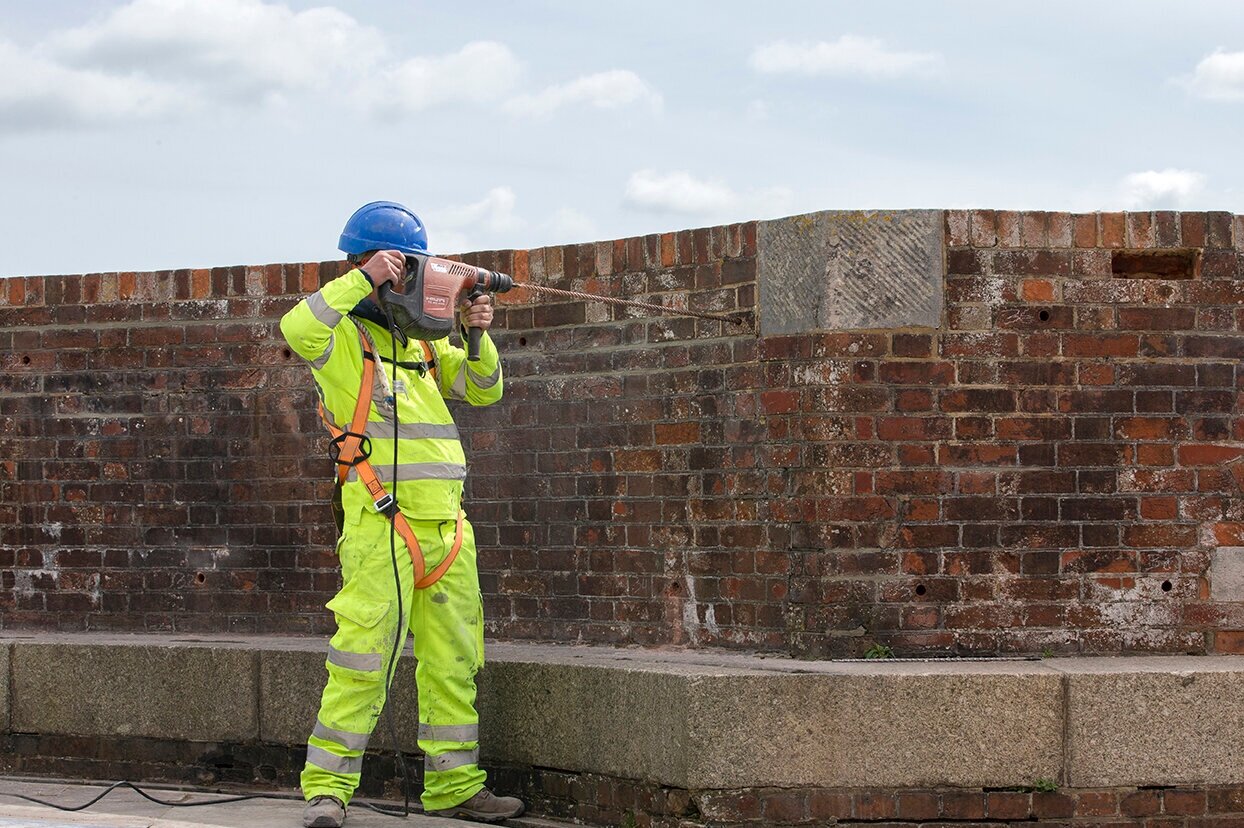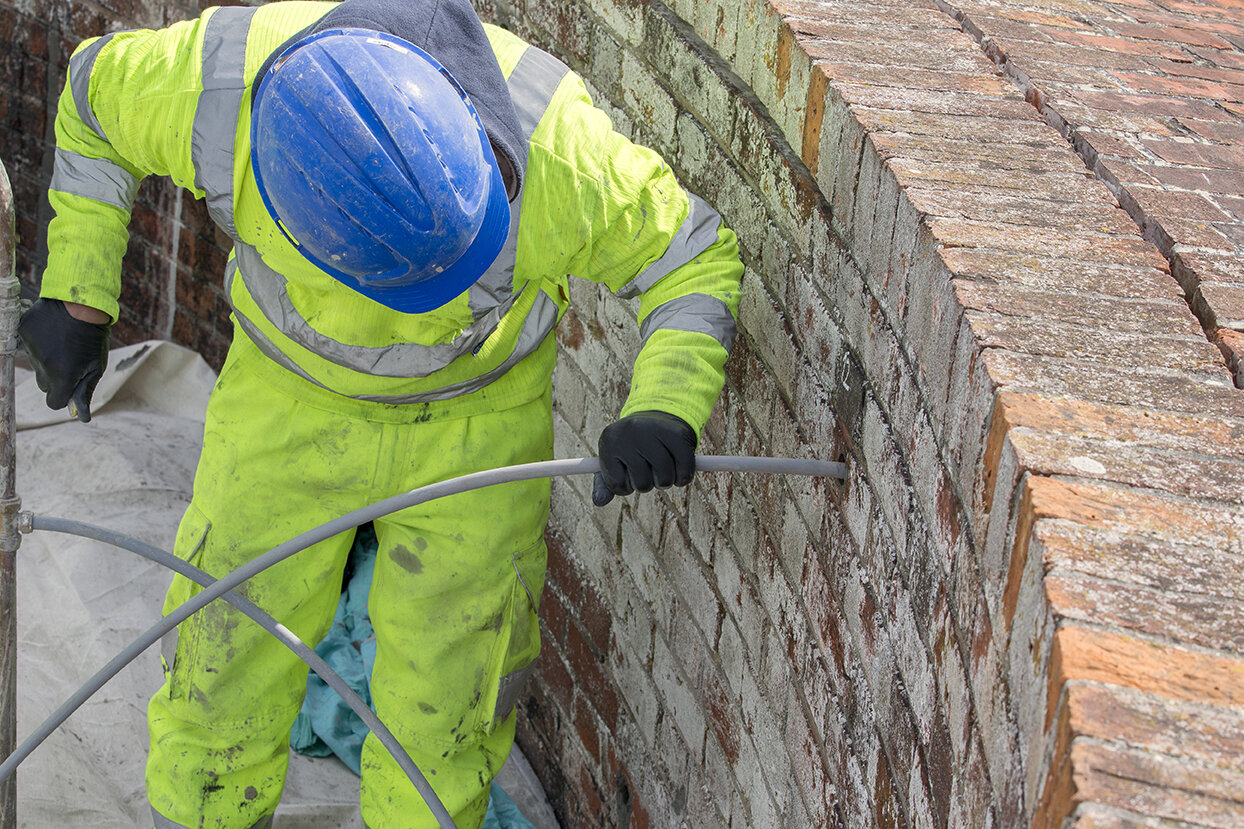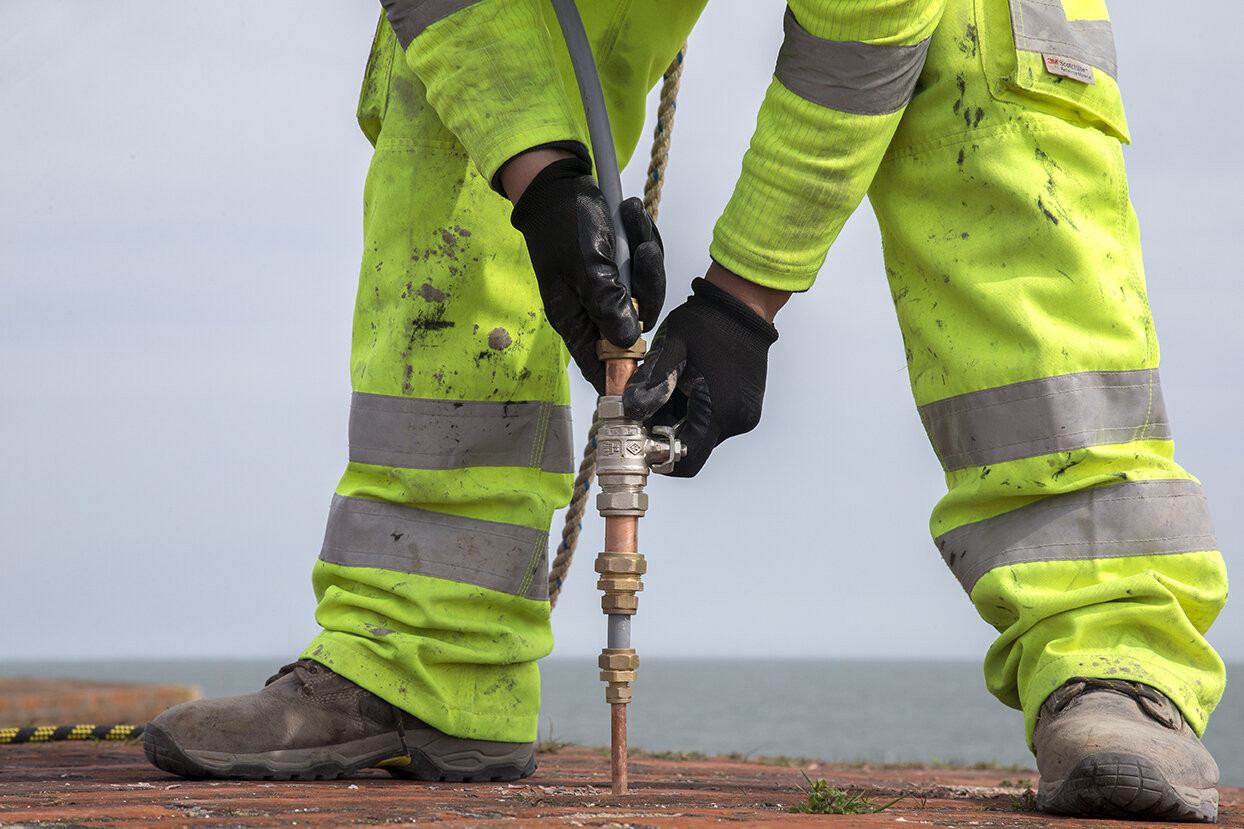Refurbishment of Heritage Structures with Lime Injection
Lime Injection is a well-established method for the sympathetic refurbishment of historic or heritage structures. Lime injection is used for the repair and conservation of masonry structures, where the use of historic material is preferable or obligatory. A frequent application is to link delaminated masonry.
Hydraulic lime grout is injected at low pressure to avoid movement to the masonry or backfill. As the material has a low viscosity it can be injected through a 10mm probe, which are placed discretely along existing mortar lines, causing minimal effect on the appearance of the structure. Low pressure injection assists absorption, as the injected material can easily displace water or air in the structure. The grout replaces missing mortar, penetrates cracks, and fills voids.
We have used lime grout injection successfully on heritage projects like churches and cemetery walls, as well as historic road bridges.
Feeding in the injection hose
Typical Applications
Heritage structures
Historic bridges
Cemetery walls
Lime injection through the parapet
Equipment & Grout Specification
There are different options for lime grout specification, depending on the strength requirements:
Pure lime grout reaches a strength of 1 N/mm2, matching existing lime putty mortar. With heritage approval, the lime grout can have added non-cementitious blenders to increase strength and fluidity. This can be useful for heritage road bridges as it retains the natural benefits of lime, like longevity, water repelling, flexibility and self-healing, while increasing a structure’s strength: a mid-strength blender can achieve a grout equivalent of NHL 5 with 5 N/mm2 of compressive strength, a high-strength blend can reach up to 16 N/mm2 compressive strength. Note: no cements are included in the lime grout material formulations we apply.
We inject lime grout with an air-driven 1:1 ratio diaphragm pump, preventing any pressure on the substrate.
Loading the pump hopper with lime grout
Key Benefits
Ideal for heritage structures
Linking of delaminated masonry/ brick
Strengthening of structure, if required
Filling of voids
Good saturation of structure through low-pressure injection
Appearance is retained, probes can be discretely placed on mortar lines
Quantities can be measured and recorded
Non-jacking
Successful also in conjunction with acrylic waterproofing to backfill, heritage approved
Application Conditions & Limitations
Structure that show flowing water will require waterproofing injection before lime grout is applied. In this case, the waterproofing resin must be limited to srategic locations and quantities, to prevent if filling space needed for the strengthening material. On a typical masonry structure, localised injection of the waterproofing grout into the backfill will give sufficient temporary relief from flowing water to enable effective lime injection. Acrylic waterproofing grout has received Heritage approval in a number of structures into the backfill.
If substantial masonry repairs are required, these should be carried out before grouting works commence to allow the new brickwork sections to be fully bonded with the existing structure.
Any missing pointing should be replaced before injection commences to minimise loss of grout.
Example Lime Grouting Projects
Milner Hall, Winchester, The Parish of Hampshire Downs
Bugle Bridge, Monmouthshire Council
Pont Gilbert, Monmouthshire Council
Ruins Bridge, Surrey Council
Mill Lane Bridge, Surrey Council
The Langley Hotel, H.S. Dev



